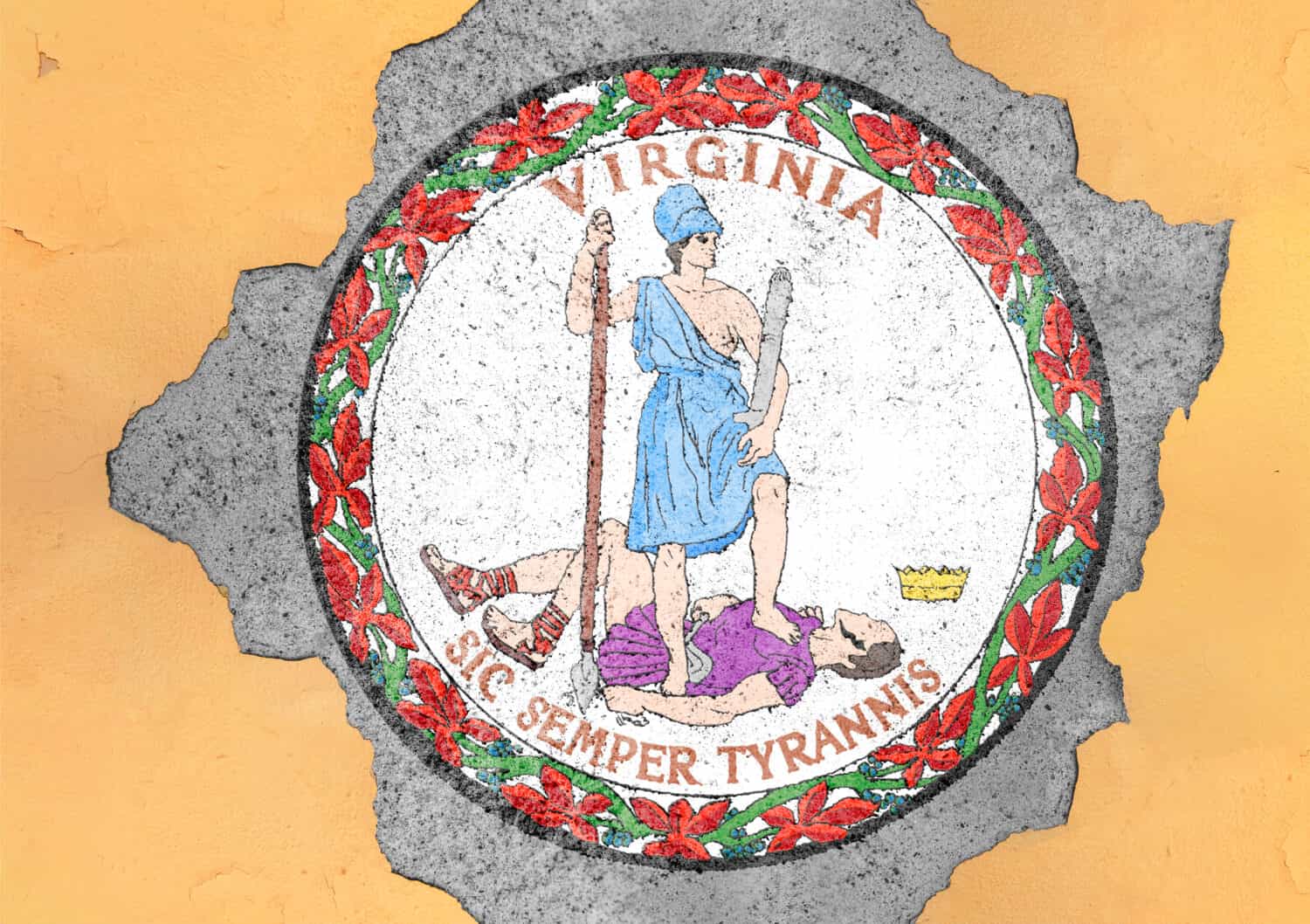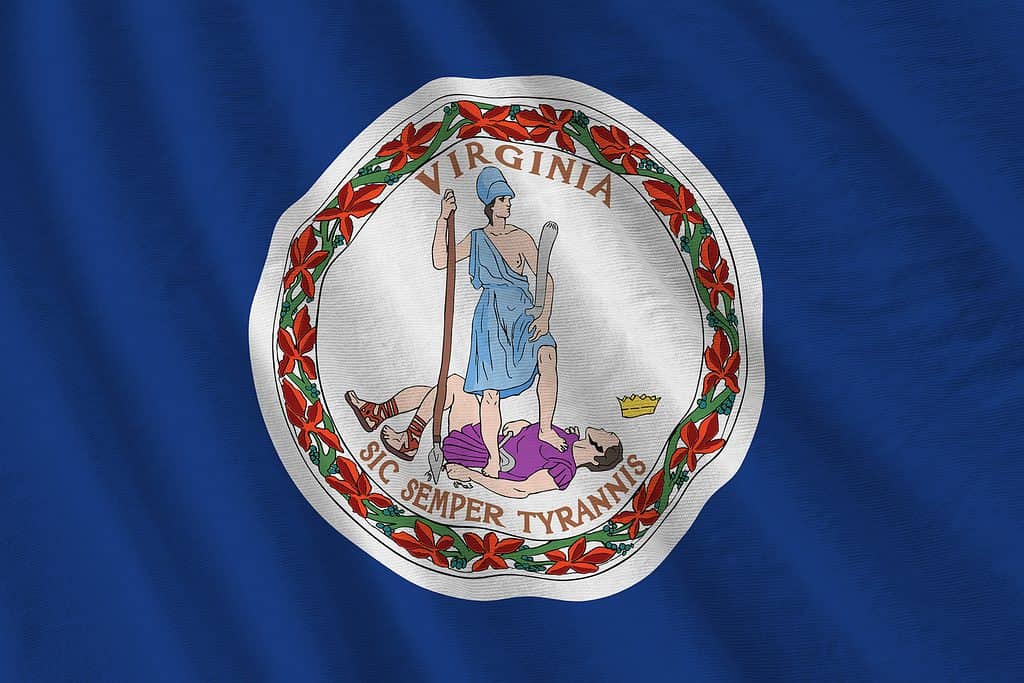The state seal of Virginia is a symbol of the Commonwealth’s (as it is referred to since its creation in 1776) identity and history. It was created during the American Revolution when Virginia declared independence from Great Britain in 1776. The seal has two sides, each with a different design and meaning. Let’s explore a little more about this seal and some of the details hidden within!
Virginia State Seal History

©Bennian/Shutterstock.com
1776: The Creation of the Seal
The first side of the seal (officially referred to as the “obverse” of a seal) was designed by George Wythe, a signer of the Declaration of Independence. Wythe was a famous lawyer and judge at the time. He was appointed by the Virginia Convention of 1776 to make the seal for the new government, along with three other men: Richard Henry Lee, George Mason, and Robert Carter Nicholas Sr. They wanted a seal that would reflect the values of the people of Virginia, but they really didn’t want it to look anything that resembled Great Britain. A lot of the group’s inspiration came from the mythology and history of ancient Rome because of Rome’s early resistance towards any form of tyranny.
The seal’s obverse depicts a female figure representing Virtus, the Roman goddess of virtue and bravery. She is dressed as an Amazon warrior and has a spear in her right hand and a sword in her left hand. She stands over the fallen body of a tyrant (another poke in the eye of Great Britain), who has a broken chain and a whip in his hands. His crown lies nearby on the ground, a signal of casting off the monarchy. The word “Virginia” is above the scene, and the motto “Sic Semper Tyrannis” is below it. The motto means “Thus Always to Tyrants” and is attributed to Brutus, who assassinated Julius Caesar in 44 BC. Pretty much every aspect of the early seal was built around a hatred for tyranny!
1779: The Addition of the Reverse
The second side of the seal, also known as the reverse, was added in 1779 by an act of the General Assembly. It was based on a sketch by Wythe, but it was not engraved until 1780 by Thomas Jefferson’s father-in-law, John Wayles Eppes. The reverse of the seal shows three more female figures representing Libertas (liberty), Aeternitas (eternity), and Ceres (agriculture). Libertas holds a wand and a cap that symbolize freedom (a common theme in many flags and seals around the world). Aeternitas holds a globe and a phoenix that symbolize immortality. Ceres holds a cornucopia and an ear of wheat that symbolize abundance. The word “Perseverando” is above them, meaning “By Persevering”.
1861-1873: The Civil War Era
The state seal of Virginia underwent some changes during and after the Civil War (1861-1865). In 1861, Virginia seceded from the United States and joined the Confederate States of America. The Virginia Convention of 1861 adopted a state flag that featured the obverse of the seal on a blue background.
However, not all Virginians supported secession from the Union. In western Virginia, some people (called Unionists) established the Restored Government of Virginia in 1861, which remained loyal to the United States. They also modified the state seal by adding the words “Liberty and Union” to both sides. This version of the seal was used by Unionist authorities until 1873.
In 1873 the General Assembly repealed the act that added “Liberty and Union” to the seal. They restored the original design of 1776 with some minor changes. They also adopted an official description of the seal in an ordinance that is still recognized today (and where a lot of this information came from)!
1903-Present: The Modern Seal

©Mehaniq/Shutterstock.com
The state seal of Virginia has remained largely unchanged since 1903, except for some variations in color and style. It is used on all official documents and papers of Virginia’s government and its flag. It is also displayed on public buildings, monuments, license plates, coins, stamps, and a whole assortment of other items.
Virginia State Seal Symbolism and Meaning
The state seal of Virginia has two sides with different meanings. The first side shows Virtue defeating Tyranny, representing Virginia’s victory over Britain in the American Revolution. The motto “Sic Semper Tyrannis” means “Thus Always to Tyrants”. The second side shows Liberty, Eternity, and Agriculture, representing Virginia’s values and prosperity. The motto “Perseverando” means “By Persevering”.
The post Discover the Virginia State Seal: History, Symbolism, and Meaning appeared first on AZ Animals.
from Animal News, Facts, Rankings, and More! - AZ Animals https://ift.tt/QWHFL4I